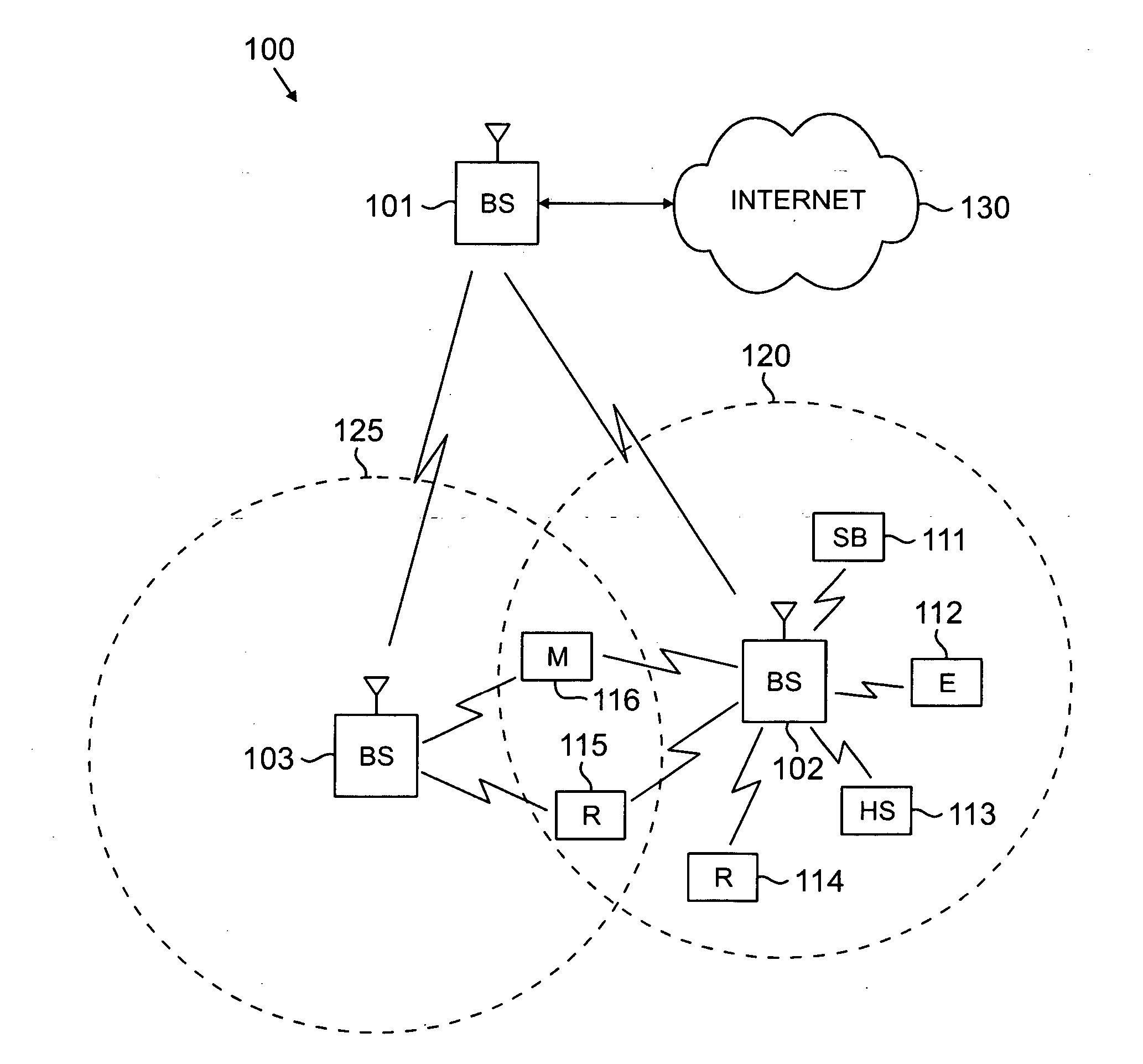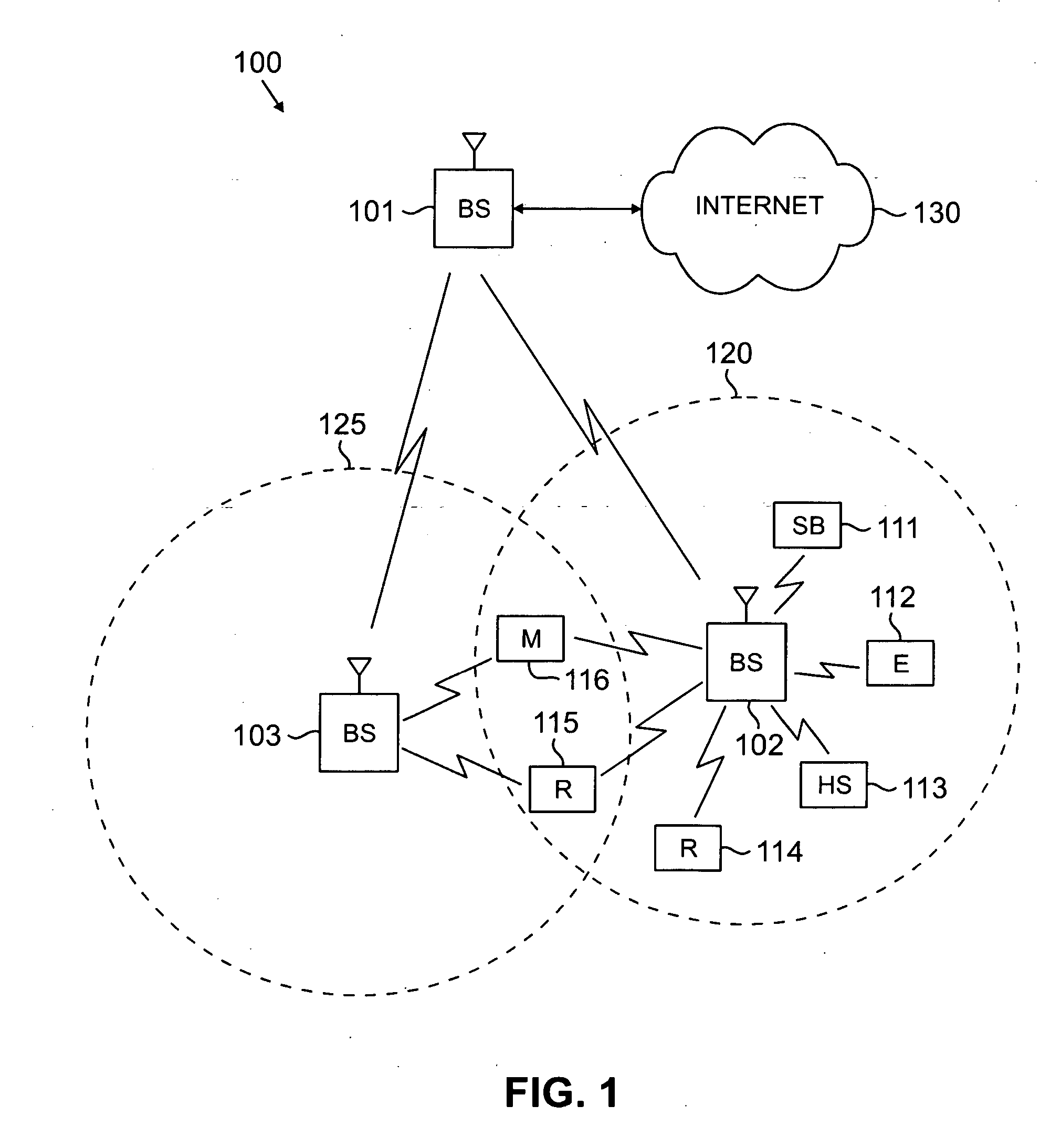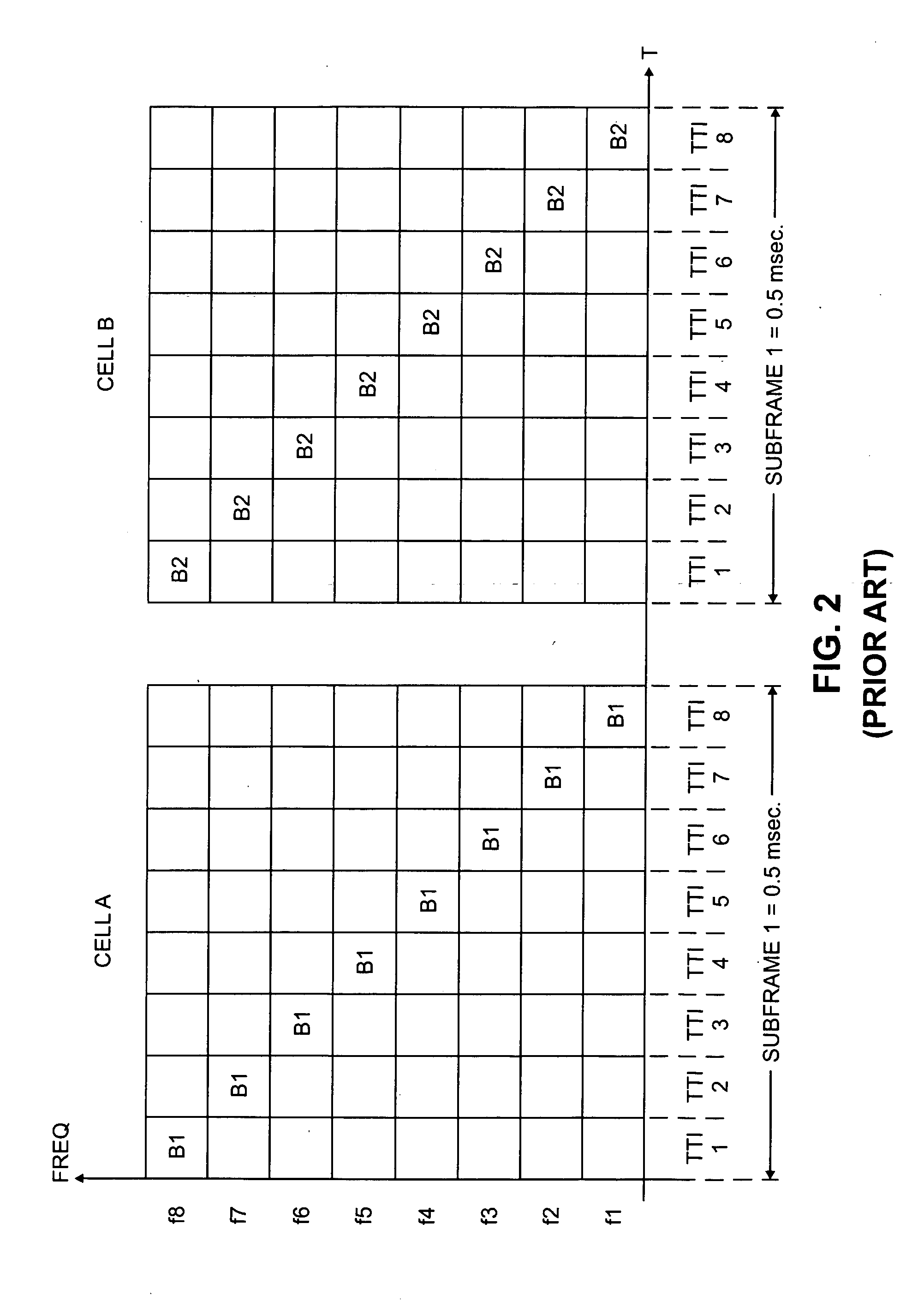Broadcast scheme for a multi-carrier wireless network
a wireless network and multi-carrier technology, applied in the field of wireless communications, can solve problems such as system inefficiency
- Summary
- Abstract
- Description
- Claims
- Application Information
AI Technical Summary
Benefits of technology
Problems solved by technology
Method used
Image
Examples
first embodiment
[0035]FIG. 4 is a high-level block diagram of the transmit path of base station (BS) 102, which broadcasts system-specific broadcast control channel traffic and cell-specific broadcast control channel traffic according to the present disclosure. FIG. 4 depicts only the processing of broadcast control channel (BCCH) information. It will be understood by those skilled in the art that broadcast data, unicast data, and various control signals (e.g., pilots channel), among others, are also processed by the transmit path of BS 102, but are not shown.
[0036] The transmit path of BS 102 comprises coding blocks 410a and 410b, quadrature amplitude modulation (QAM) blocks 420a and 420b, Size N inverse Fast Fourier Transform (IFFT) block 430, and add cyclic prefix (CP) block 440. At least some of the components in FIG. 4 may be implemented in software while other components may be implemented by configurable hardware or a mixture of software and configurable hardware. In particular, it is noted ...
second embodiment
[0044]FIG. 6 is a high-level block diagram of the transmit path of base station (BS) 102 according to the present disclosure. As in FIG. 4, FIG. 6 depicts only the processing of broadcast control channel (BCCH) information. The transmit path of BS 102 comprises coding (R=⅔) block 610a, coding (R=⅓) block 610b, 16-quadrature amplitude modulation (16-QAM) block 620a, quadrature phase shift keying (QPSK) block 620b, Size N inverse Fast Fourier Transform (IFFT) block 630, and add cyclic prefix (CP) block 640.
[0045] The transmit path in BS 102 in FIG. 6 operates substantially similarly to the transmit path in FIG. 4. However, in FIG. 6, the coding rate (R=⅓) applied to the cell-specific BCCH information by coding block 610b is lower (i.e., stronger) than the coding rate (R=⅔) applied to the system-specific BCCH information by coding block 610a. Similarly, the modulation scheme (QPSK) applied to the cell-specific BCCH information by QPSK block 620b is lower (i.e., stronger) than the modul...
third embodiment
[0048]FIG. 8 is a high-level block diagram of the transmit path of base station (BS)102 according to the present disclosure. As in FIGS. 4 and 6, FIG. 8 depicts only the processing of broadcast control channel (BCCH) information. The transmit path of BS 102 comprises coding (R=⅔) block 810a, coding (R=⅓) block 810b, 16-quadrature amplitude modulation (16-QAM) block 820a, quadrature phase shift keying (QPSK) block 820b, multiplexer (MUX) 822a, multiplexer (MUX) 822b, multiplier 825a, multiplier 825b, Size N inverse Fast Fourier Transform (IFFT) block 830, and add cyclic prefix (CP) block 840.
[0049] The transmit path in BS 102 in FIG. 8 operates substantially similarly to the transmit path in FIG. 6. However, in FIG. 8, the system-specific BCCH information and the system pilot signals are combined by MUX 822a and are then scrambled by multiplier 825a using a system-specific scrambling code (SC) Similarly, the cell-specific BCCH information and the cell pilot signals for BS 102 are com...
PUM
 Login to View More
Login to View More Abstract
Description
Claims
Application Information
 Login to View More
Login to View More - R&D
- Intellectual Property
- Life Sciences
- Materials
- Tech Scout
- Unparalleled Data Quality
- Higher Quality Content
- 60% Fewer Hallucinations
Browse by: Latest US Patents, China's latest patents, Technical Efficacy Thesaurus, Application Domain, Technology Topic, Popular Technical Reports.
© 2025 PatSnap. All rights reserved.Legal|Privacy policy|Modern Slavery Act Transparency Statement|Sitemap|About US| Contact US: help@patsnap.com



